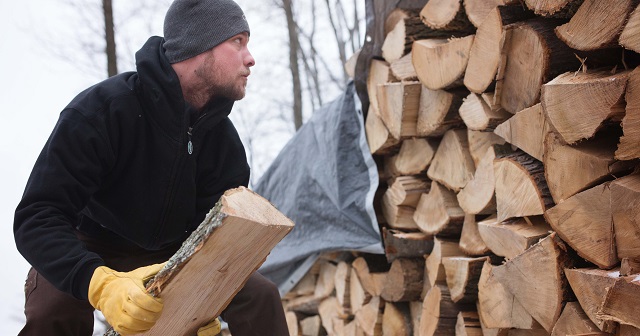Article contributed by Bill Weber, team captain at Arborwear
As cold weather approaches, people often ask, “How should my crews dress?” The simplest answer is dress like an onion and think in terms of layers; an onion has many layers and so should anyone working outdoors in cold temperatures.
Arborwear, a leading arborist clothing retailer, likes to steer people toward three layers: a base layer, a mid-layer and an outer layer. Sometimes one layer can perform multiple duties but for the most part during cold weather months, it is best to have these three addressed before you head out for work.
The base layer is the next-to-skin-layer. This is the layer that keeps your skin warm but also should transfer moisture to other layers as you sweat. Therefore base layers that wick are the best. These can be thin long underwear or simple performance T-shirts, but as long as they move moisture away from the body, they will keep you dry and warm. These layers are often made of thin merino wool, polypropylene or unique blends that perform well together.
The mid-layer should be your insulation layer. This is where the heat resides. Think of an R-value on insulation for your home. You want something with an R-value that measures up to the coldest weather you may face that time of year. For some this layer might be a fleece pullover, a sweatshirt or even a wool sweater. Again, if this layer wicks moisture, then your sweat keeps will continue to be carried farther away from your body, which is a good thing. There are many great insulating textiles. Some are light and thin and easy to move, and others are heavy and bulky but provide serious warmth.
Lastly everyone needs a protective shell or outer layer. The main purpose is to keep the elements out. This means wind, rain and snow. Outer layers can be jackets, parkas, rain gear, snowsuits, etc. Anything that keeps the inner layers dry and breaks the wind.
Another important piece of the puzzle is the ability to easily modify your layering in the field. By wearing layers that can unzip or unsnap partially or fully, you can regulate your temperature quickly. If it is hard for your crew to modify their layering on the spot, then a majority of people will just keep working and “suck it up” for the rest of the day.
By wearing a sufficient layering system, workers in the field remain more comfortable, more level- headed, and less susceptible to injury and temperature-related hazards.
So the next time the crews are gearing up for a cold weather day, remind them to dress like an onion.
